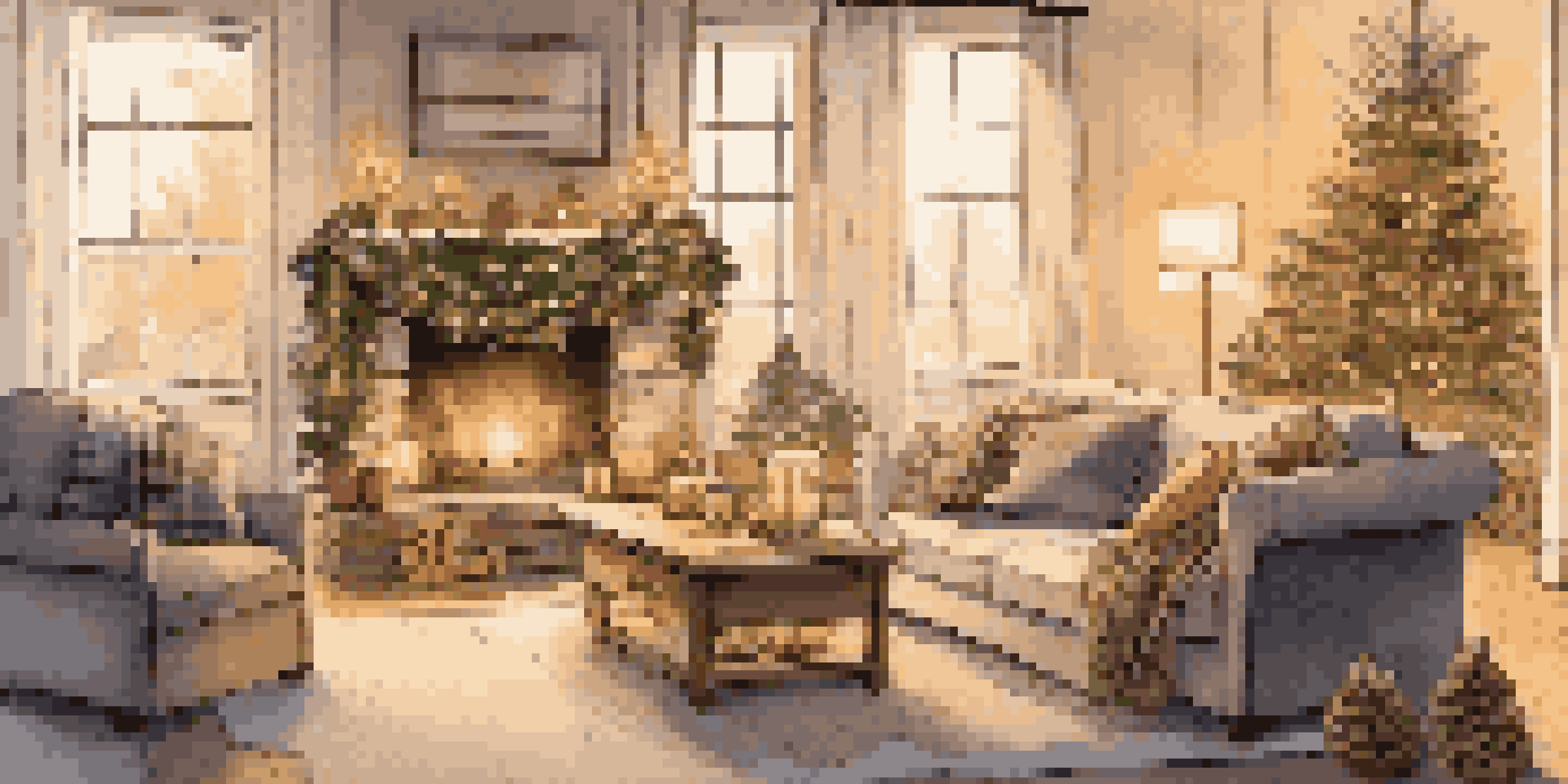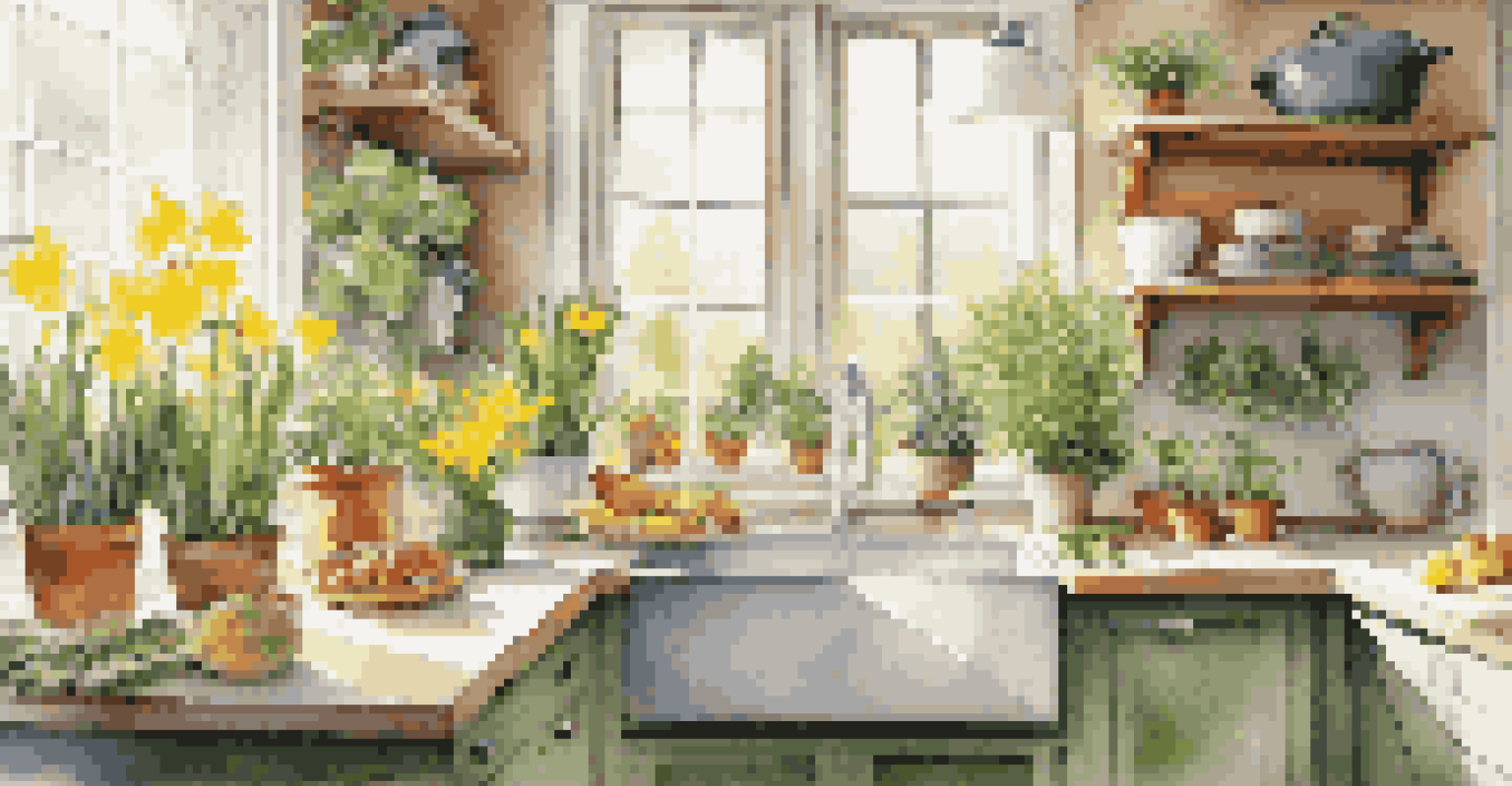Sustainable Seasonal Decor: Eco-Friendly Ideas for Every Month

January: Embrace Natural Elements for Winter Warmth
As the new year begins, consider incorporating natural elements like pinecones and evergreen branches into your decor. These items not only reflect the beauty of winter but can also easily be sourced from your local environment, reducing your carbon footprint.
Nature does not hurry, yet everything is accomplished.
Creating a cozy atmosphere is essential during the colder months, so think about using soft, organic fabrics for blankets and cushions. Look for materials like cotton or wool that are sustainably sourced and biodegradable.
Don’t forget to add some twinkling lights; opt for LED options that consume less energy. By embracing nature and sustainable materials, your home will feel warm and inviting while staying eco-conscious.
February: Celebrate Love with Recycled Craft Projects
February is all about love, and what better way to express that than through thoughtful, handmade decorations? Gather materials like old newspapers, fabric scraps, or even empty jars to create unique crafts.

Try making heart-shaped garlands or upcycled candle holders to brighten up your space. These projects not only showcase your creativity but also promote the idea of reusing items that might otherwise end up in the landfill.
Embrace Nature in Home Decor
Incorporating natural elements and sustainable materials creates a warm, inviting atmosphere while being eco-friendly.
By focusing on recycled crafts, you’ll not only save money but also foster a deeper appreciation for the resources we often take for granted. Plus, you’ll have a one-of-a-kind decor that tells a story!
March: Bring the Outdoors In with Fresh Spring Decor
As spring approaches, it’s time to refresh your space with vibrant colors and natural elements. Consider using potted plants or herbs as decorative accents; they not only look great but also purify the air.
The Earth has music for those who listen.
You can also create a beautiful centerpiece with seasonal flowers like daffodils or tulips, which can be picked locally. This adds a burst of color and freshness to your home while supporting local growers.
Embrace the spirit of renewal by decluttering and donating items you no longer need. This practice of giving back complements your eco-friendly decor and sets a positive tone for the season.
April: Celebrate Earth Day with Upcycled Decorations
April is a perfect month to align your decor with Earth Day celebrations. Upcycling old items into beautiful decor pieces is a fantastic way to honor the planet while being creative.
For example, you can transform glass bottles into vases or use wooden pallets to create rustic shelving. The possibilities are endless when it comes to giving new life to forgotten objects.
Celebrate with Upcycled Crafts
Using recycled materials for crafts not only fosters creativity but also promotes sustainability and resource appreciation.
By embracing upcycled decor, you not only reduce waste but also create unique pieces that reflect your personal style. It's a wonderful way to showcase your commitment to sustainability.
May: Brighten Spaces with Eco-Friendly Fabrics
As we step into May, it's time to lighten up your decor with bright, eco-friendly fabrics. Look for items made from sustainable materials like hemp or organic cotton for curtains, tablecloths, and cushions.
Choosing light colors can create an airy feel in your home, making it perfect for the warmer months. You can even make your own fabric items from leftover materials, adding a personal touch.
Incorporating these fabrics not only enhances your decor but also promotes a healthier home environment. Plus, it supports sustainable textile practices that are better for the planet.
June: Infuse Nature with Outdoor-Inspired Decor
June is all about embracing the outdoors, so why not bring that spirit inside? Use natural materials like wood, stone, or bamboo to create a serene and calming atmosphere in your home.
You can also incorporate beach-themed decor by using shells and sand for a coastal vibe. These elements connect your space to nature while being eco-friendly and beautiful.
Seasonal Decor Enhances Connection
Adapting your decor to reflect seasonal changes connects your home with nature and supports local resources.
Additionally, consider hosting a garden party with decor made from recycled materials. This not only showcases your creativity but also encourages friends and family to think sustainably.
July: Celebrate Summer with Local and Seasonal Decor
As summer heats up in July, celebrate the season with local and seasonal decor. Think about using fresh fruits and vegetables as centerpieces; they bring vibrant colors and a delightful aroma to your home.
You could create a fruit basket or hang a wreath made from herbs and flowers sourced from local gardens. This not only supports local farmers but also enhances the freshness of your decor.

Inviting the summer harvest into your home is a fun way to celebrate the season and promote sustainability. Plus, you can enjoy the fruits of your labor in more ways than one!
August: Prepare for Fall with Earthy Tones and Textures
As we transition into August, it's time to start thinking about the upcoming fall season. Embrace earthy tones and textures in your decor to reflect the changing landscape outside.
Consider using materials like burlap, jute, or reclaimed wood to create a warm and inviting atmosphere. These natural textures add depth and comfort to your home.
You can also begin collecting items like acorns or leaves for future seasonal projects. This not only prepares you for fall but also keeps you connected to nature as it transitions.